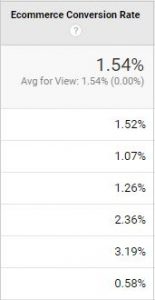When was the last time you searched Google for a last-minute hotel deal or planned a family getaway to the beach? Chances are, you’ve noticed an increasing number of ads demanding your attention, and these aren’t slowing down anytime soon. For those of us in the hospitality industry, this means managing PPC for hotels has become more competitive—and more expensive—to attract guests to your website.
A serious challenge specific to hotels and lately the vacation rental industry too is keeping your direct booking percentage high. This minimizes the commissions paid to the online travel agencies (OTAs) who are also bidding on your brand name and maximizes your profit potential. Direct bookings also deliver valuable data about your guests that OTAs will keep for themselves.
What Is PPC?

But first, what is PPC and what does it do? Pay-per-click, or PPC, is a form of marketing where advertisers pay a fee each time an ad is clicked, bringing a new visitor to their website. The classic Google sales pitch to companies is that you only pay for performance (clicks) instead of paying for general brand awareness (reach).
PPC is particularly powerful for online travel bookings because the user is typically low in the purchase funnel and close to pulling out there credit card to make the booking. This is easily the most critical time when your ads need to be present in order to win the booking versus your arch-rival across town.
PPC is incredibly popular for hoteliers to increase traffic to their websites. According to Search Engine Land, “Search spending in the US is expected to increase 24 percent over the next three years, from $36.69 billion in 2017 to $45.63 billion in 2019.” Many OTA’s (online travel agencies) are increasing their ad spending in 2018, at a time when Expedia and the Priceline Group are already two of Google’s top customers. The short-term rental startups like Airbnb and VRBO’s core business is built on the back of PPC campaigns and they’re buying growth at any cost in 2020 ahead of expected IPOs.
Whether you’re just getting started with Google Ads, or you’re looking to improve your existing campaigns, don’t give up on your Google Ads hotel strategy.
In the steps below, we will focus on the basics of Google Ads to help you understand how campaigns are built, how budgets are planned, and what to do next to improve your PPC performance in 2020 and beyond.
Part One: DIY First Steps of Keyword and Budget Planning
Do you know which keywords your competitors currently bidding on, and which keywords are going to complement your organic traffic? There are many tools that will help you understand what your competitors are doing in Google Ads. Finding out which keywords are already working is an excellent way to start your marketing research! If your competitor down the street is bidding on certain keywords, it’s likely that the OTA’s are, too. A good Google Ads strategy will allow your website to compete in this space and increase your direct bookings. Here are a few (free and paid) tools to help you get started:
At the very least, you should add your competitor’s website into Google’s Keyword Planner. There’s no need to overthink your keyword ideas initially. Simply enter a relevant URL into the planner to produce keyword suggestions. For example, after searching Google for “boutique hotel in Charleston SC,” I came across Zero George Street. Adding this website to Keyword Planner generates keyword ideas for:
- charleston sc hotels
- zero george
- boutique hotel
- places to stay in charleston sc
- best hotels in charleston sc
- hotels in downtown charleston sc
- charleston beach hotels
- luxury hotels in charleston sc
- And so on…
Keep a list of these keywords, the average cost-per-click, and the average search volume per month.
When selecting keywords for your Google Ads campaign, keep searcher-intent in mind. Search for that term in Google to see what other results are showing before you start bidding on that keyword. For example, the keyword “zero george” might work well in this case to ensure guests find your boutique hotel at the top of the results, but if you search Google and find other results for a classic film with the same name, another business across the country with the same name, or any other results that are not related to your target market, then beware! These keywords can quickly drive up your Google Ads cost while resulting in zero bookings.
Other things to consider when selecting keywords from competitors: what parts of your business are unique to you? What aspects of your hotel do guest love and tell you about in person? The keyword “Charleston beach hotels” might be a great keyword for certain hotels (on the beach) and a very bad keyword for other hotels in the area. Bottom line: Stay true to your business, and don’t add keywords that will leave visitors disappointed when they’re on your website.
Branded Search vs. Destination Keywords
Should you bid on your own business name? This is a common question we see, and the answer might surprise you. When was the last time you did a Google search for your business name? As OTA’s spend more and more on Google Ads, chances are, there’s an OTA already bidding on your name in order to “sell” your guest back to you for a commission. If this is the case, you can increase your direct bookings simply by bidding on your own name. Since it is your business and website, you should easily rank in the #1 position for a lower cost.
Note: Google has retired the Average Position metric and replaced it with Absolute Top Impression Share. However, for the purposes of explaining where ads appear in search results we’ll continue to describe positions. Generally speaking, positions one through four are above organic results, and five through eight are below.
Tip to avoid: Yes, it’s true you can bid on a competitor’s business name in Google Ads, but we wouldn’t recommend it. Competitor keywords usually have a higher cost-per-click (CPC) and a low ROAS.
Now, with your competitor keyword research, you should have a list of about 20-30 destination keywords that match your target market. Try to select the most specific keywords, when possible — keywords that match closely with your niche. (Match types will be discussed in Part Two).
Let’s Estimate Your ROAS from Google Ads Based on Your Keyword Research
To estimate your Google Ads ROAS, let’s first understand how much traffic you can expect from your keyword list (keep in mind that this is a rough estimate). Since Google is a competitive space, not everyone will click on your ad. In fact, a good click-through rate (CTR) for Google Ads for hotels is between 5 and 45%. The average across all industries is much lower (around 2%). Here is an average CTR in Google Ads based on positions #1-5 in Google:
| Average CTR (by position) | Branded Search | Location Based |
| #1 | 25% | 7% |
| #2 | 20% | 3.01% |
| #3 | 18% | 2.19% |
| #4 | 15% | 2.15% |
| #5 | 10% | 1.60% |
Should your ads always be in the #1 position? It’s not likely, and for the most ROAS, we wouldn’t recommend it. Your Google Ads budget can reach more travelers by ranking in positions #2-4. Let’s estimate the amount of search traffic that you can expect from your keyword list if all of your ads were in the #2 position.
Using your destination/location-based keywords, you can expect 3.01% of traffic to click on your ads and visit your website. Using the average search volume per month for each keyword, create a new column for “Estimated Google Ads Traffic.” Multiply the average search volume by 3.01%.
| Keyword: | Search Volume | Suggested Bid |
| “hotels in downtown charleston sc” | 14,800/month | $3.37 |
- 14,800 searches per month X 3.01% = ~ 445.5 clicks per month
With an average cost-per-click or suggested bid of $3.37, you would need to spend $1,501.27 per month to see that kind of traffic from this one keyword.
But don’t let that scare you! Remember that you can set a daily budget in Google Ads so that you only spend as much as you can afford. And, if your ads are set up well, your cost-per-click should be lower than the average. You may find out you don’t need that much traffic to meet your revenue goals. PPC’s goal is always revenue and ROAS and rarely if ever traffic for traffic’s sake.
Let’s use these estimated numbers to calculate an estimated ROI:
- Log in to your Analytics account (you will need eCommerce tracking for these next steps).
- Select a date range of at least the past year.
- On the left, click “Acquisition > All Traffic > Channels”
- Looking at your website traffic by channel, the right side of the screen will display your eCommerce Conversions (online bookings).
- Look closely at your eCommerce Conversion Rate:
If this is your first Google Ads campaign, then Organic Search is a good benchmark for an estimated conversion rate (in this case, 1.52%). Visitors from organic traffic likely found your website from a similar search (i.e. “places to stay in Charleston” or “hotels in Charleston,” etc.), landed on your website, liked what they saw, and booked. YES!
Now let’s see if we can repeat that process with Google Ads to convert paid clicks into paying guests.
Using the estimated numbers from earlier, we saw an expected 445.5 website visits per month, for a cost of $1,501.27.
- 445.5 X 1.52% conversion rate = ~ 6.8 transactions.
Now, using your booking reports, calculate your average transaction value for the past year (this will vary depending on your location, room rate, and other factors).
- For this example, let’s say that an average guest spends $456.18.
- Note: This is not average room rate since many guests will book multiple nights.
- 6.8 transactions X $456.18 = $3,102.02.
- If the cost for AdWords was $1,501.21, that’s a 107% ROI!
- Repeat this process for your main keyword groups to have a better understanding of expected traffic and cost each month.
Important note: These numbers are only a rough estimate, and you will not know your exact CTR, CPC, or website traffic each month until after your Google Ads campaign is running. Though the numbers are not exact, this exercise can help you understand how much demand there is for destination keywords in your area, and how much competition there is around you. Generally, more competition in your area means a higher CPC for each keyword, and in some cases, the ROAS may not be high enough for you to bid on those keywords.
Part One Summary
Being able to achieve a 100% ROAS is quite exciting for many marketers familiar with the opaque world of advertising via broadcast or print or any other traditional medium – when true return on ad investment is not directly correlated to the campaign and is more of a yes or no than a hard percentage. It’s true, PPC is quite potent versus any other marketing medium in existence when it comes to performance and revenue booked.
But the caveat is that getting 100% ROAS, or doubling your money, is really the floor of where a successful PPC campaign should be. While the above exploratory first steps are helpful to start you thinking in terms of keywords and clicks, they are very far from what will take your account from doubling your money to making 5X, 10X and yes, even above 50X.
What’s Next?
Ready to try PPC but just want the fast track to huge revenue? We can get your ads live and delivering within a few days!
Please get in touch for a free 30-minute consultation. We’ll assess your business, revenue goals and challenges. Then we can share a plan of how Q4Launch services can get your marketing on the right track – the fast track – to profitable, sustainable growth.

